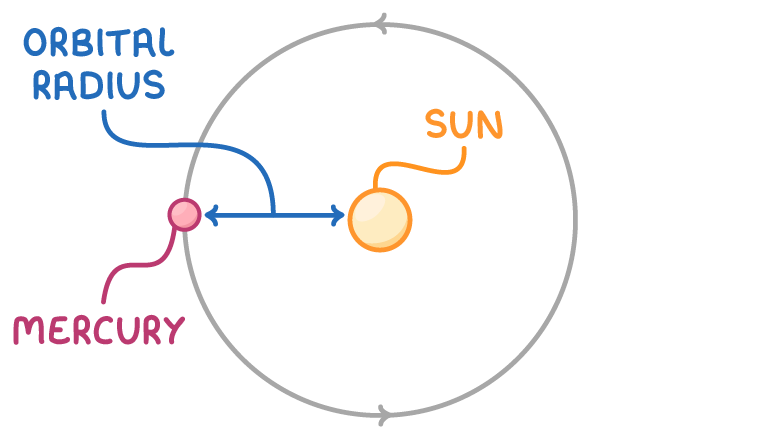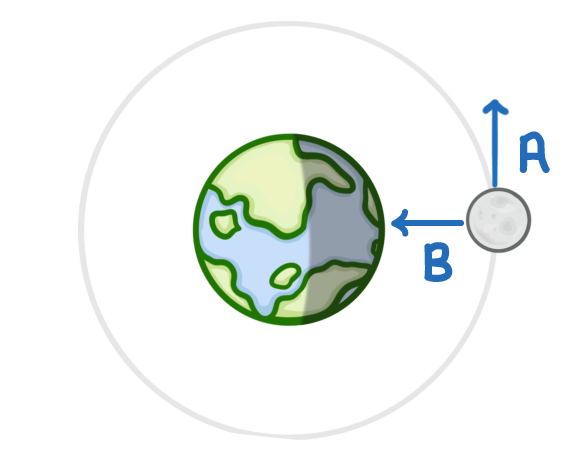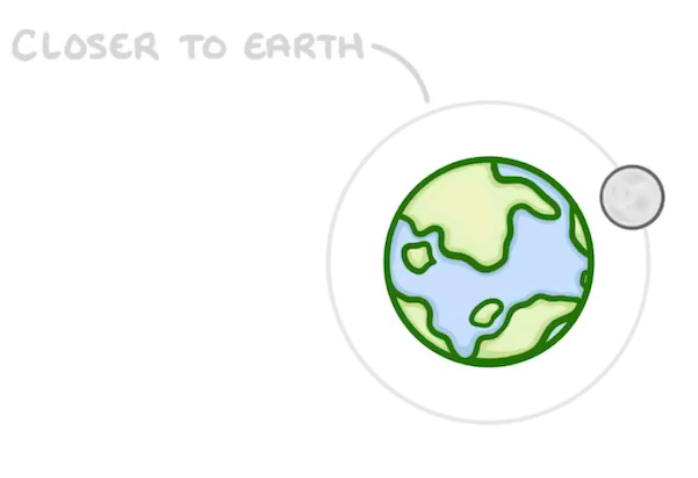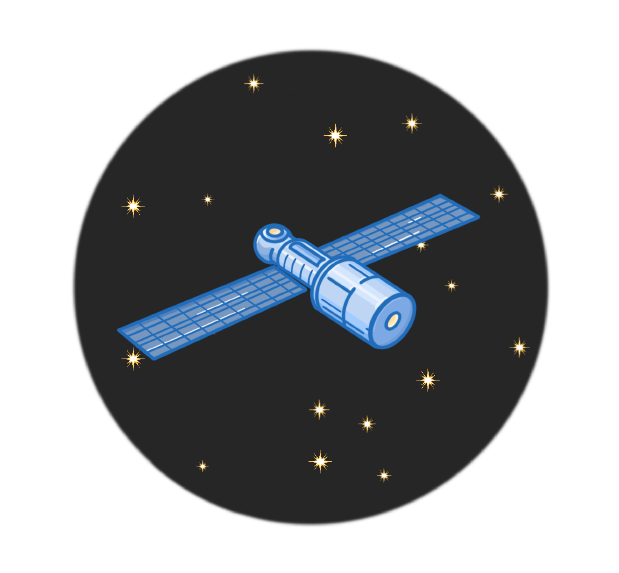Orbits
This lesson covers:
- Why objects orbit each other
- Why orbiting objects are constantly accelerating even though their speed doesn't change
- How the speed of an object's orbit is related to the size of their orbit path
An orbit is the curved path of one celestial object or spacecraft, around another celestial object.
Speed of orbits
You need to know how to calculate the orbital speed of objects travelling with circular orbits, such as Mercury orbiting the Sun.

The equation linking orbital speed, orbital radius and time period is below.
Worked example: Orbital speed of Mercury
Mercury orbits the sun with an orbital radius of 58 million kilometres and a time period of 88 days.
This is how to calculate the orbital speed of Mercury:
Which of Newton's three laws is this:
"An object travelling at a certain velocity will continue to travel at that velocity unless acted upon by a resultant force."
Third law
Second law
First law
|

The diagram above shows the moon orbiting the earth.
Which arrow, A or B, shows the direction of the instantaneous velocity?
A
B
|

The diagram above shows the moon orbiting the earth.
Which arrow, A or B, shows the direction of the force of gravity?
A
B
|
Velocity is a vector quantity which means it has both magnitude and direction.
During orbit, one of these quantities is constantly changing, which means the velocity is also constantly changing.
Which quantity is constantly changing?
Magnitude
Direction
|
Which statement about objects in orbit is true?
The speed and velocity are both constant
The speed is constant but the velocity is changing
The speed and velocity are both changing
The speed is changing and the velocity is constant
|
Which of these correctly explains whether an orbiting object is accelerating, and why?
The object is accelerating because the velocity is changing
The object is not accelerating because the speed is constant
The object is not accelerating because the velocity is constant
The object is accelerating because the speed is changing
|

If an object moves closer to the object it's orbiting, it will experience a greater force of gravitational attraction.
What is required for the object to stay in orbit?
The magnitude of the velocity must stay the same
The magnitude of the velocity must increase
The magnitude of the velocity must decrease
|

What provides the force needed to keep a satellite in its orbit?
Gravity
Friction
Tension
|